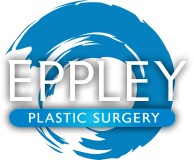Your Questions
Your Questions
Q: Dr. Eppley, I have a cheek bone bigger that the other… due to a malocclusion and a deviated jaw. I was wondering if my jaw is place in position I will still have a cheekbone bigger that the other… where is the incision made to reduce this zygomatic bone in my case. Thanks for your time.
A: Without looking at any pictures of your face and x-rays, I can not answer how your cheekbone would look if your jaw is repositioned. Most likely, however, it will not look better and may likely look worse as the jaw is moved more into a more centric midline facial position. There are numerous types of cheekbone osteotomies, depending on what type of cheek bone reduction is needed. With facial asymmetry, most likely the bigger asymmetric cheek needs to be moved in medially towards the facial midline. This type of cheek osteotomy would be done through an incision inside the mouth. (vertical medial cheek ostectomy)
Dr. Barry Eppley
Indianapolis, Indiana
Q: This is in regards to an unusual form of craniofacial surgery which I have been hoping to obtain for many years. I have a slender jawline and forehead, somewhat prominent browline, and both wide and prominent cheekbones. I was wondering if it were possible to have the cheekbones (by which I mean the zygomatic bone itself, the temporal process, and then the zygomatic process of the temporal bone) replaced entirely by synthetic implants so as to make my face more slender and these features, in particular, well-proportioned to the other features of my face.
A: The slimming effect to which you refer is known as cheek or midface reduction. To do so by conventional craniofacial surgery is well known and the techniques well established. It is a more common request in the Asian poopulation due to their facial shape. Complete cheek reduction is done by osteotomizing the front (zygomatic process) and back part (temporal process) of the cheek, removing bone, and allowing the enture zygomatic bone and arch (which creates the facial width) to move inward. The new bone positions are then secured with small plates and screws. This is done through an incision inside the mouth and a small incision in the temporal hairline. One can usually get a bifacial narrwoing of around 1 to 1.5 cms.
While any type of implants can be fabricated off of 3-D C scans and models, it is not practical to replace the entire zygomatic complex and arch to obtain midfacial narrowing. This would require extensive surgery, a large scalp incision, the removal of masticatory muscles which are attached to the bones, and the significnt risk of facial nerve injury. While this is done for extensive traumatic bone injuries and tumor resections, those risks for a cosmetic concern are not reasonable. This is particularly true when you consider that the same if not better result can be obtained by less invasive and ‘simpler’ surgical techniques.
Dr. Barry Eppley
Indianapolis, Indiana

